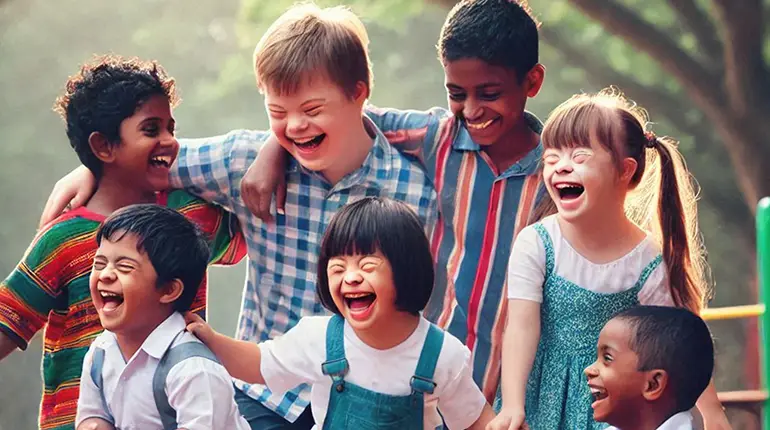Behavioral Patterns of a Special Needs Child

Children with special needs, such as those on the autism spectrum, often exhibit unique behavioral patterns. These behaviors can vary widely in intensity and frequency, and it’s crucial for parents, caregivers, and educators to understand them.
Repetitive Behaviors (Stimming)
Repetitive behaviors, often referred to as “stimming,” are a common characteristic. These behaviors can include:
- Rocking: Gently swaying back and forth or rocking on their hands and knees.
- Spinning: Revolving around their own axis or spinning objects.
- Hand flapping: Repeatedly flapping their hands or arms.
- Head-banging: Gently hitting their head against a surface.
- Echolalia: Repeating words or phrases spoken by others.
- Self-stimulation: Engaging in repetitive sensory activities such as touching textures, spinning objects, or making repetitive sounds.
While these behaviors may appear unusual to some, they are often self-soothing mechanisms that provide sensory input and reduce anxiety.
Unusual Interests
Children with special needs may develop intense and focused interests in specific topics or objects. These interests can range from a fascination with trains and cars to an obsession with particular numbers or colors.
- Intense focus: They may spend hours engaging with their area of interest, often to the exclusion of other activities.
- Difficulty transitioning: They may become upset or distressed when their routines or activities related to their special interests are disrupted.
These intense interests can sometimes be channeled into positive learning experiences, allowing children to develop deep knowledge and skills in their areas of passion.
Unusual Reactions to Sensory Input
Sensory sensitivities are common among children with special needs. They may experience:
- Hypersensitivity: Overwhelming reactions to sounds, sights, smells, tastes, or touch. This can include strong aversions to certain textures, loud noises, or bright lights.
- Hyposensitivity: Under-responsiveness to sensory input. This can lead to seeking out intense sensory experiences, such as jumping, crashing, or spinning.
These sensory sensitivities can significantly impact a child’s daily life and require careful consideration in their environment and daily routines.
Social Challenges
Social interaction can be challenging for many children with special needs.
- Difficulty interpreting social cues: They may struggle to understand and respond appropriately to nonverbal communication, such as body language, facial expressions, and tone of voice.
- Limited social interaction: They may have limited interest in social interaction, preferring solitary activities or engaging in repetitive behaviors.
- Difficulties with communication: They may have difficulty expressing their needs and emotions, leading to frustration and social isolation.
Providing a supportive and understanding environment can help children develop social skills and build meaningful relationships.
Challenging Behaviors
Some children with special needs may exhibit challenging behaviors, such as:
- Aggression: Hitting, biting, kicking, or throwing objects.
- Self-injurious behaviors: Head-banging, biting themselves, or pulling their hair.
- Property destruction: Damaging objects or property.
- Tantrums: Intense emotional outbursts, including screaming, crying, and throwing themselves on the floor.
These behaviors are often a form of communication, indicating that the child is experiencing distress, frustration, or anxiety. It is crucial to identify the underlying causes of these behaviors and develop appropriate interventions to address them.
Self-Harm
Self-injurious behaviors can be a significant concern for some children with special needs. These behaviors can include:
- Biting: Biting themselves or others.
- Head-banging: Hitting their head against surfaces.
- Skin picking: Picking at their skin, causing injury.
These behaviors can be distressing for both the child and their caregivers. It is essential to consult with professionals such as therapists or behavior analysts to develop appropriate interventions to address these concerns.
Understanding and Support
It’s important to remember that these behavioral patterns are diverse and vary significantly among individuals. Understanding the underlying causes of these behaviors is crucial for providing appropriate support and interventions.
Key Considerations:
Individualized approach: Each child is unique, and their behavioral patterns require an individualized approach to understanding and support.
- Positive reinforcement: Focus on positive reinforcement strategies to encourage desired behaviors and discourage challenging behaviors.
- Therapeutic interventions:
- Applied Behavior Analysis (ABA): A scientifically-based approach that focuses on identifying and changing challenging behaviors.
- Speech and language therapy: To address communication difficulties.
- Occupational therapy: To improve sensory processing and fine motor skills.
By working closely with professionals, parents, and caregivers can create a supportive and understanding environment that helps children with special needs thrive.
